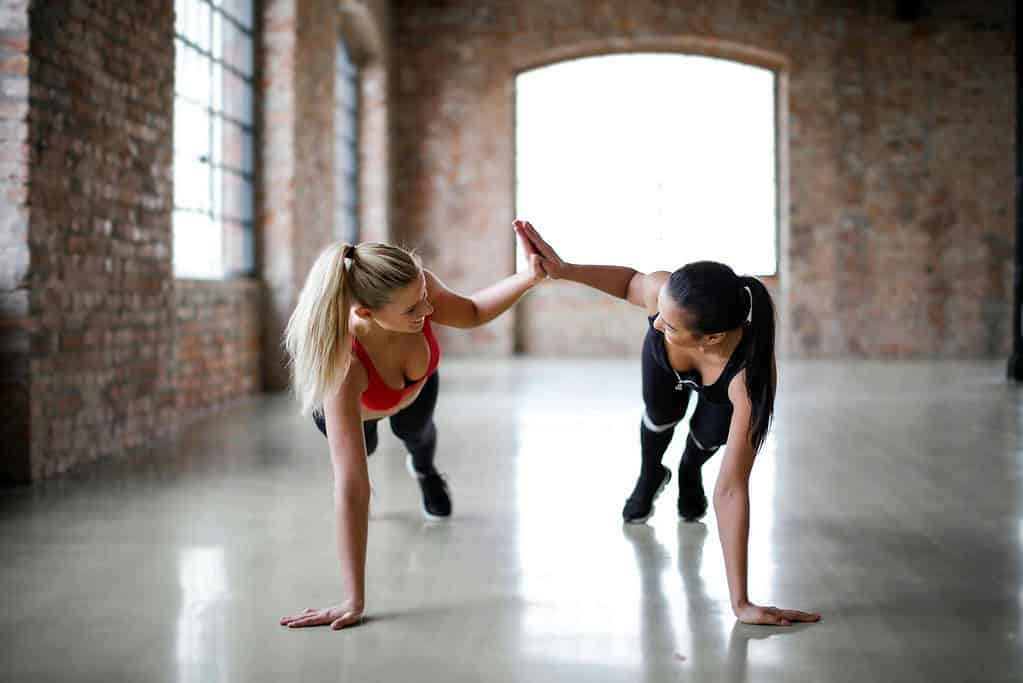Ballet Warm Up – Everything You Need To Know
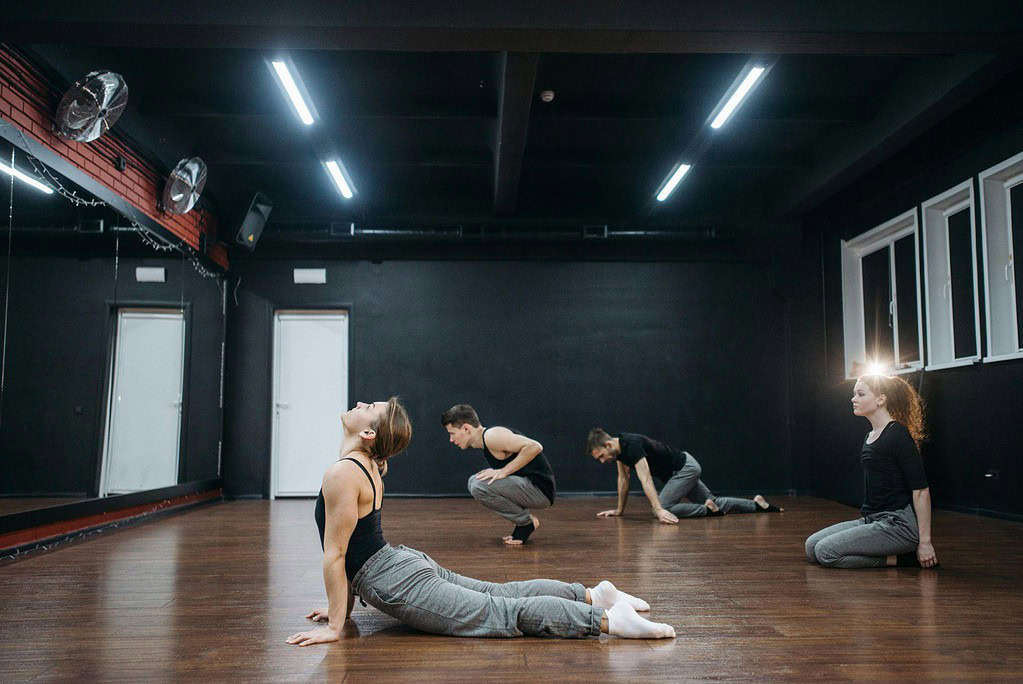
Most dancers engage in a thorough ballet warm up before class.
But I hear you asking, isn’t the ballet barre intended to be a warm up?
While the ballet barre helps to prepare and warm up your body for ballet-specific movements, a dedicated warm up session is crucial for your whole body and mind.
By properly warming up, dancers can enhance their readiness for the day, maintain peak performance, and reduce the risk of injuries.
Before your next class, try dedicating 15-20 minutes to warming up and experiencing firsthand the positive impact it can have on your performance and overall well-being.
In this blog post, I’ll teach you everything you need to know about a ballet warm up, including five of the best ballet warm up exercises.
WHY IS A BALLET WARM UP IMPORTANT?
A proper ballet warm up is important for preparing your body and mind for the challenges of dance class, rehearsal, or performance, and reducing the risk of injury.
You might think that a ballet warm up involves casually sitting in splits and scrolling through Instagram.
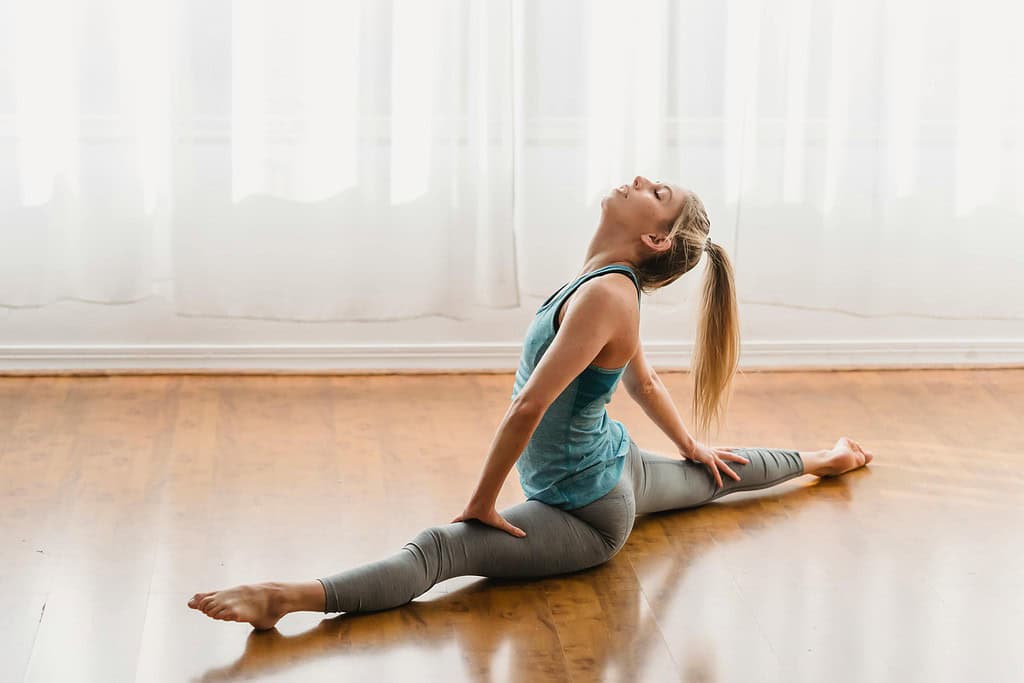
However, it’s far more than that!
Dancers who are serious, and prioritise their ballet warm up are more likely to reach their full potential and notice a significant difference in their dance performance.
For effective warm up, your routine should include:
TOP 3 BENEFITS OF A BALLET WARM UP
A ballet warm up provides a range of benefits, including enhanced flexibility and range of motion, improved blood circulation and muscle activation, and injury prevention and physical readiness.
ENHANCED FLEXIBILITY AND RANGE OF MOTION
A ballet warm up enhances joint mobility by increasing blood flow and lubricating the joints, facilitating improved and easier movement.
Additionally, it helps increase the elasticity, and therefore flexibility of soft tissues such as muscles, tendons, and ligaments.
Ultimately, this will expand your range of motion and promote greater flexibility (something most dancers aspire to achieve).
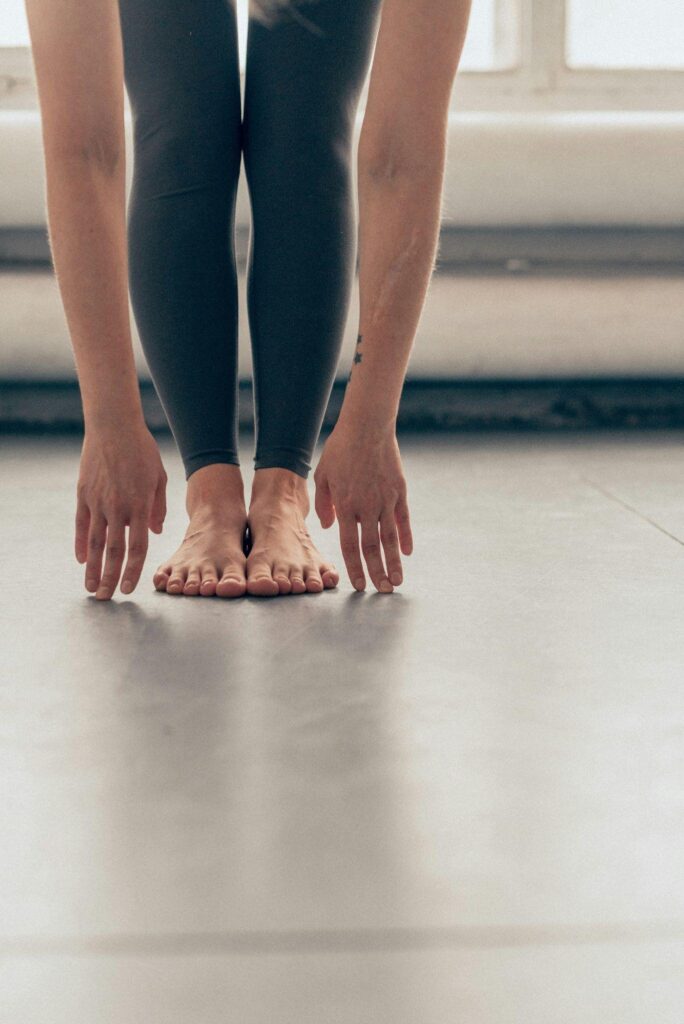
IMPROVED BLOOD CIRCULATION AND MUSCLE ACTIVATION
As we initiate cardiovascular training during warm up, our blood circulation accelerates, our breathing and heart rate elevates, and our body temperature rises.
This increased activity signals a greater demand for oxygen and energy in our muscles.
This primes our bodies for the physical demands of dance and efficiently activating all the major muscle groups involved.
It also helps improve our nerve impulses, effectively enhancing motor control functions, including balance, coordination, and proprioception.
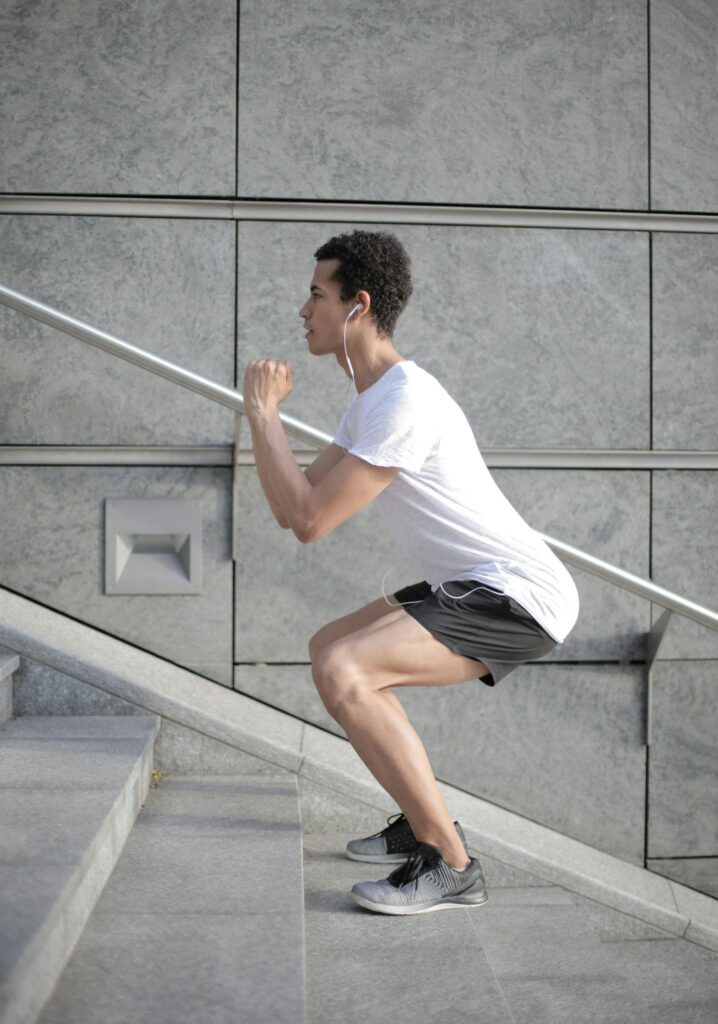
INJURY PREVENTION AND PHYSICAL READINESS
A thorough warm up minimises the risk of muscle strains and injuries by gradually increasing the intensity of movements and stretches.
It helps dancers identify areas of tightness or discomfort that may require additional attention, rolling, or modification throughout the day.
Along with physical readiness, a proper warm up provides mental preparation and focus before beginning the day’s practice or performance.
THE 5 BEST BALLET WARM UP EXERCISES
There are so many wonderful ballet warm up exercises that can be included in your daily routine.
Here are my top five recommendations, each targeting a specific area of the body.
EXERCISE 1 – DOWNWARD DOG TO PLANK
The transition from downward dog to plank is a highly effective ballet warm up exercise which works the whole body through a flow of movement.
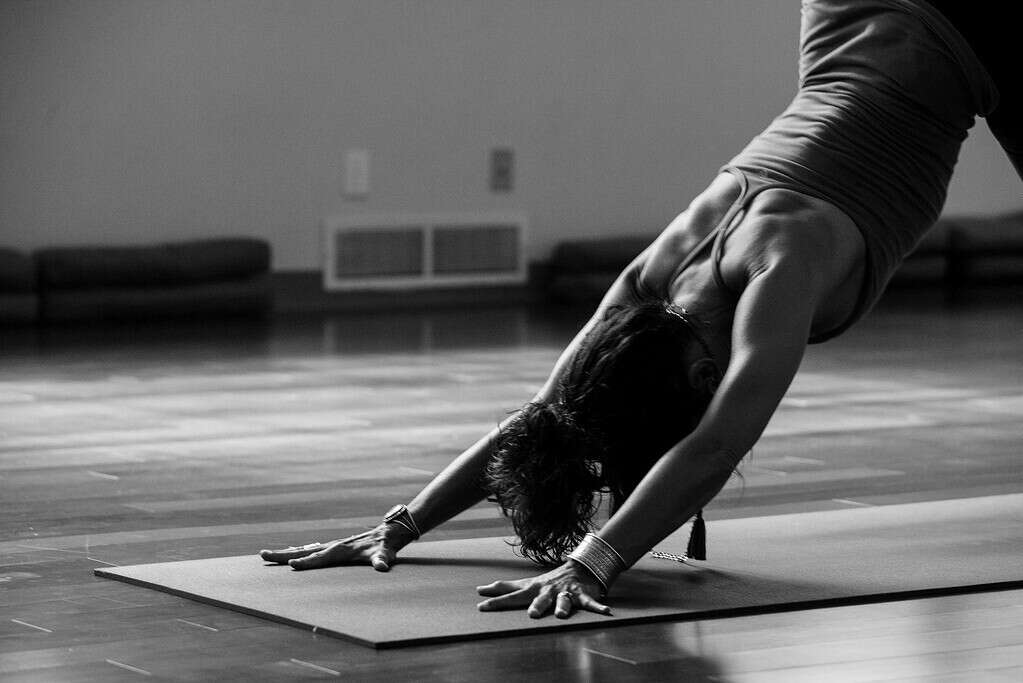
This exercise:
This dynamic movement increases blood circulation and elevates the heart rate.
This prepares your body for increased flexibility and range of motion, improved strength and stability, and enhanced mind-body connection.
EXERCISE 2 – SQUATS IN SECOND POSITION
Squats in second position, similar to plies in second, are an excellent exercise for dancers to incorporate into their warm up routine.
Squats strengthen the quads, glutes, hamstrings, and inner thighs, improving muscle power and control.
They also enhance range of motion in the hips, knees, and ankles, crucial for deep plies and high extensions.
By working in a turned out second position, dancers activate their deep rotator muscles (essential for maintaining proper turnout).
EXERCISE 3 – GLUTE BRIDGES
Glute bridges are excellent for a ballet warm up.
They strengthen the glutes and hamstrings, engage the core and back, and improve stability and hip mobility.
Glute bridges can be varied by placing the feet on demi-pointe, legs in parallel or slightly turned out positions, and can be performed with both legs or just one.
These variations can further challenge your muscles and stability, ensuring a thorough warm up for your dance training.
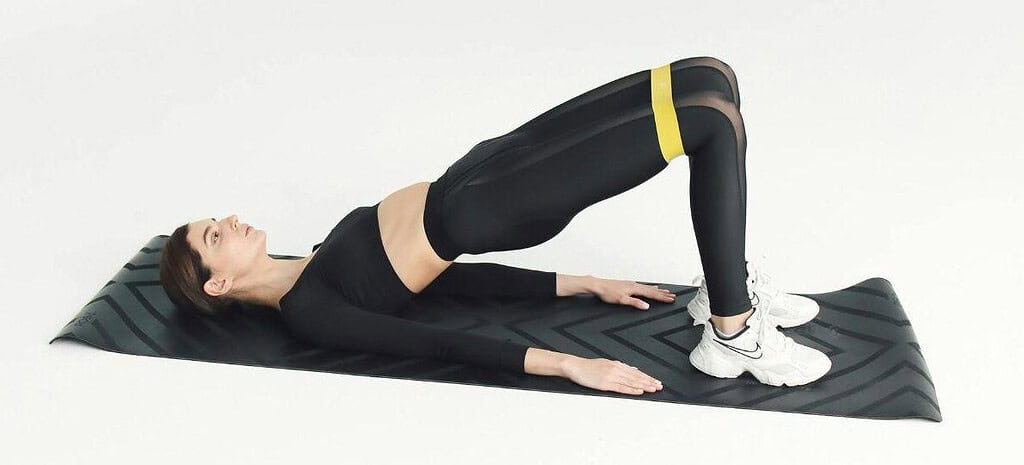
If you’re looking to take your warm up a step further, try performing glute bridges with the use of a theraband either around the ankles or upper thighs.
EXERCISE 4 – CLAMS WITH LEG EXTENSION
Clams with leg extensions are ideal for engaging the muscles essential for ballet. This exercise strengthens the glutes and deep rotator muscles.
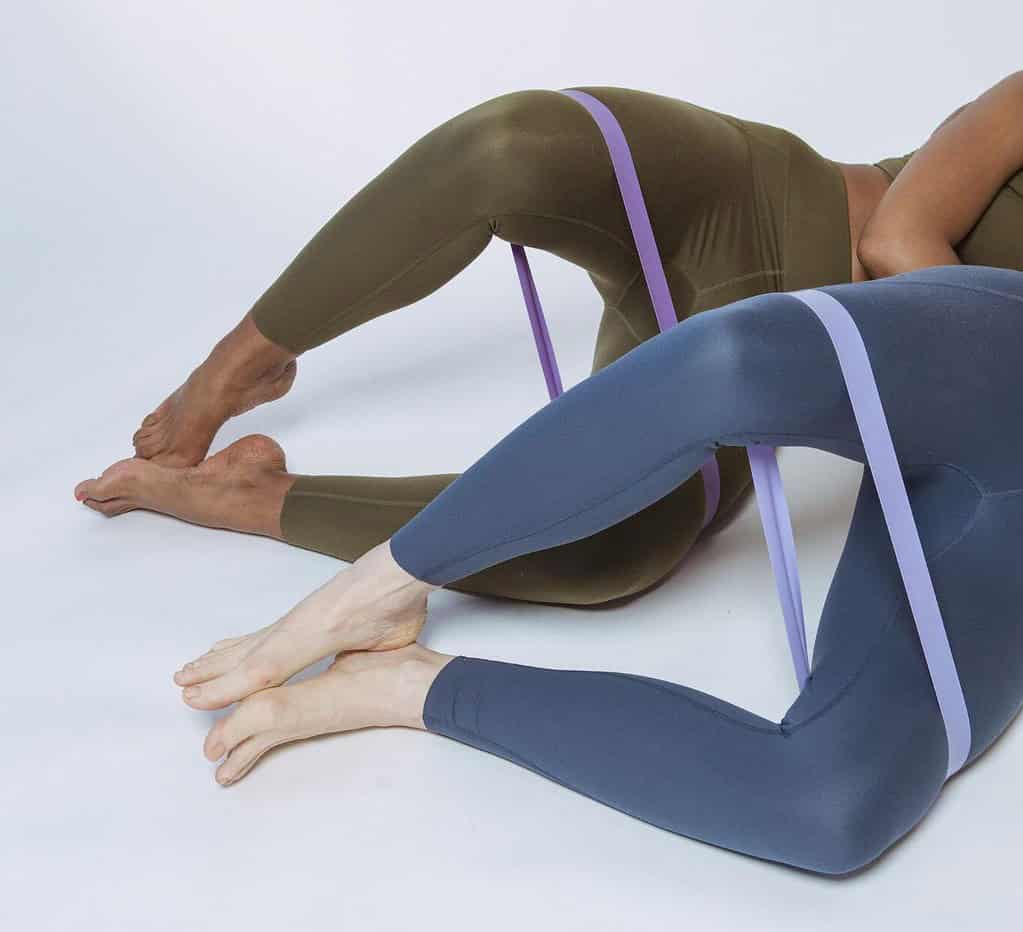
Adding leg extensions challenge the adductors and abductors while challenging your core control and stability.
Regular practice of clams with leg extensions, boots burnout, muscle endurance, and hip range of motion, making it a valuable addition to any ballet warm up.
EXERCISE 5 – DEAD BUG
The dead bug exercise engages the entire body, making it ideal for ballet warm ups.
Coordinating opposite arm and leg movements challenges all of the core muscles (including the obliques), and helps improve balance and stability throughout the body.
This exercise also strengthens the mind-body connection, enhancing body awareness and spatial perception.
TAILOR YOUR WARM UP TO THE BALLET INTENSITY LEVEL
When tailoring your warm up for ballet, it’s vital to tune into your body and consider the level of intensity needed based on your daily schedule and physical condition.
Whether you have a busy day of rehearsals or you’ve recently performed in an evening show, your warm up should be adapted to meet your specific needs, demands, and goals.
A tailored ballet warm up typically begins with gentle cardiovascular activity like light jogging, jumping jacks, or using a stationary bike if available in the studio.
Once your body is warmed up, start to integrate dynamic movements and stretches that target major muscle groups including the back, abs, hips, glutes, legs, and feet.
Examples of effective warm up exercises include leg swings, pliés, lunges, squats, bridges, and hip circles.
Be sure to incorporate exercises that promote turnout and alignment, fundamental for ballet technique.
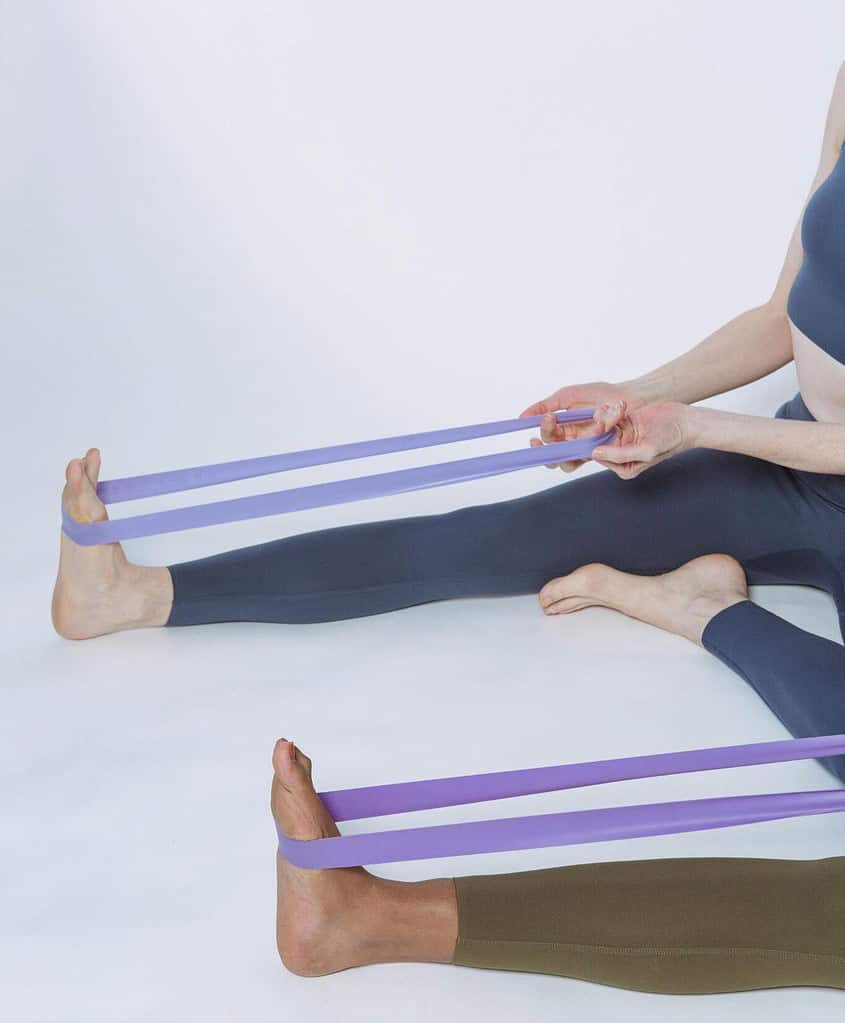
If necessary, conclude your warm up with gentle stretching.
Focus on areas of tightness, and consider using tools like a theraband for foot exercises, especially if you’ll be wearing pointe shoes immediately afterwards.
Remember, there’s no one-size-fits-all approach to a ballet warm up.
TAILOR YOUR WARM UP TO SPECIFIC TYPES OF BALLET CLASSES
Ballet warm ups should be tailored to your schedule, physical condition, and individual needs as a dancer.
It’s crucial to adjust your warm up routine based on what your body requires on any given day and circumstance.
BALLET CLASS AFTER A PERFORMANCE
For instance, if you had an intense dance performance the night before, you might wake up feeling fatigued or sore the next morning.
In such a scenario, your ballet warm up could prioritise dynamic exercises and stretches to each muscle tension and enhance joining mobility.
You might opt for a gentle approach by focusing on calmly lengthening and engaging tight muscles.
You could do this with a bit of self massage or rolling to ease any tension or pressure points.
EASY DAY SCHEDULE
On the other hand, if your schedule is relatively light for the day, you might have the energy to push yourself a bit further.
You could consider incorporating a conditioning workout later in the day.
Start with a brief yet intense cardio activity to warm up, focusing on a full body approach. Aim to build strength and flexibility throughout your entire body.
In this case, try incorporating resistance bands or the use of other equipment to further warm up your body for ballet practice.
TIMING MATTERS – WHEN TO START AND HOW LONG?
Performing a ballet warm up is essential before engaging in any physical exercise, whether it’s class, rehearsals, or a performance.
Timing is crucial to maximise its benefits.
While some dancers may require an hour to fully warm up and prepare mentally, in my experience, a focused 15-20 minute warm up session is generally sufficient.
It’s important to avoid too much time between the end of your warm up and the start of your dance session to prevent cooling down and a decrease in heart rate.
Try and wear warm clothing (ie. tracksuit, leg warmers, or dance booties) to keep your muscles warm and your body ready to go!
MY TOP WARM UP PRODUCT RECOMMENDATIONS
Here are my top recommendations for warm up products to pack in your dance bag to enhance your warm up routine and keep your body nice and cosy.
PRODUCT 1 – RESISTANCE BAND (AKA THERABAND)
In my opinion, therabands are an essential item for every dancer to enhance both strength and flexibility.
They are particularly effective for warming up muscles and targeting specific areas such as the legs, hips, glutes, and feet.
They are compact, portable, and lightweight, making them easy to carry in your dance bag without taking up much space.
Therabands are incredibly versatile, and are available in different levels of resistance.
PRODUCT 2 – FOAM ROLLER
Another personal favourite is the foam roller.
Its primary purpose is to relieve muscle tension and improve blood flow by gently rolling out or massaging tight muscles.
However, it’s also great for the back and core, improving spinal mobility, core control and alignment.
I’d recommend finding a foam roller that includes trigger points or a textured surface as they provide more benefits compared to foam rollers with a smooth surface.
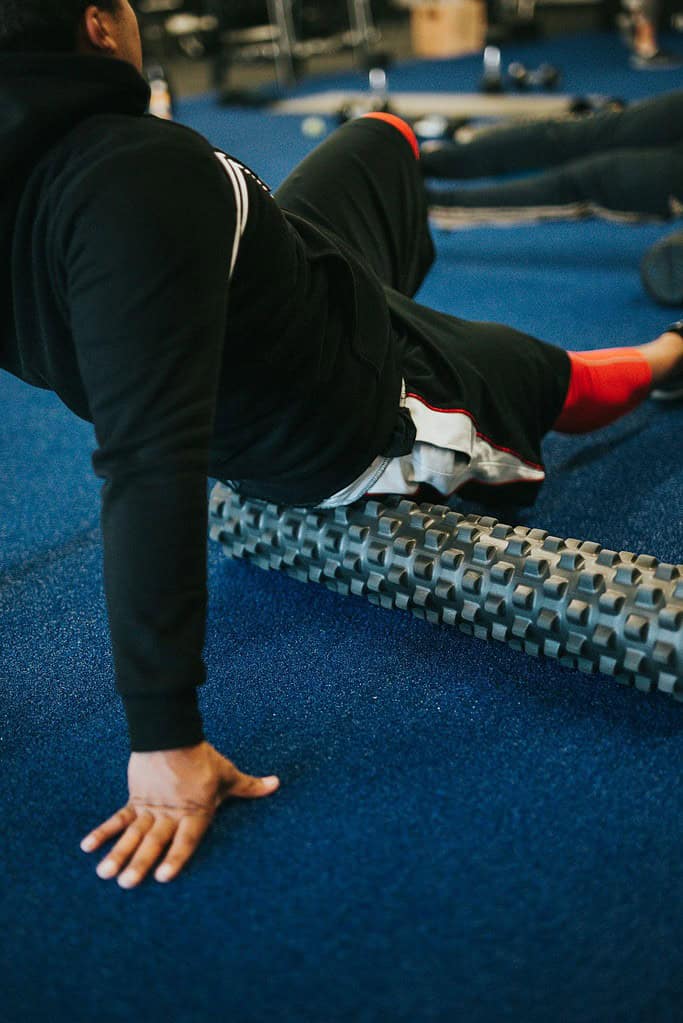
PRODUCT 3 – BALLET DANCE BOOTIES
Ballet dance booties have evolved into a bit of a fashionable accessory, but their primary purpose is to keep the feet warm and comfortable.
Dance booties are ideal for keeping the feet warm before class or between rehearsals, providing protection from cold studio floors.
Remember, they can be worn over both ballet and pointe shoes, making them versatile and practical for dancers.
They are available in various styles, colours, and sizes, offering dancers options to suit their preferences.
SAMPLE BALLET WARM UP ROUTINES
If you’re unsure where to start, here are three different ballet warm up routines that take between 20-30 minutes to complete.
Keep in mind that every dancer’s body is unique, so each dancer will need to tailor their warm up to their specific needs.
EXAMPLE 1 – BALLET WARM UP
Jasmine McDonald’s ballet warm up focuses on strengthening and lengthening the muscles. It includes dynamic stretching, and finishes off with thereband foot exercises.
Video credit: Jasmine McDonald
EXAMPLE 2 – BALLET WARM UP
Maria Khoreva’s ballet warm up emphasises engaging and strengthening the muscles, and incorporates dynamic stretching and some massage techniques.
Video credit: Maria Khoreva
EXAMPLE 3 – BALLET WARM UP
This warm up routine by Train Like A Ballerina takes a gentle approach, emphasising joint and muscle mobility and flexibility.
Video credit: Train Like A Ballerina
WRAP UP
A ballet warm up is a crucial part of a dancer’s daily routine, vital for optimising performance and ensuring career longevity.
Like classes or rehearsals, a ballet warm up should support dancers in achieving their best.
It’s important to vary your warm up routine based on your changing needs and demands, always listening to your body to prevent overuse, injury, or fatigue.
Setting a goal for your warm up can be beneficial, ensuring that you address all body parts, including the upper and lower body, which are essential for dance.
Remember to save static stretching for your post-session cool-down, as it is far more beneficial in aiding muscle recovery.
If you’re struggling to find motivation for your warm up, consider making it more enjoyable by playing music or involving other dancers, especially if you crave a bit of socialising in the morning.
You don’t need to go to extremes during your warm up, it’s meant to prepare your body, not exhaust it!
